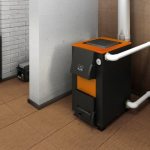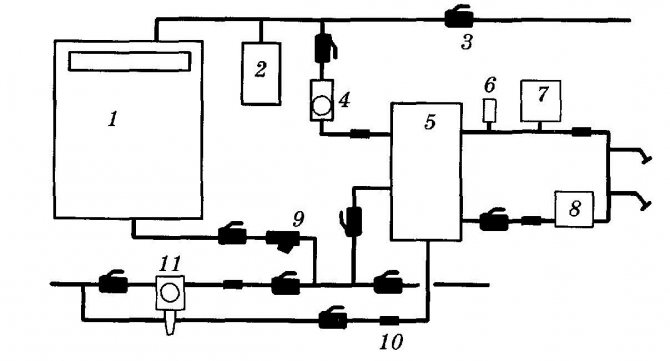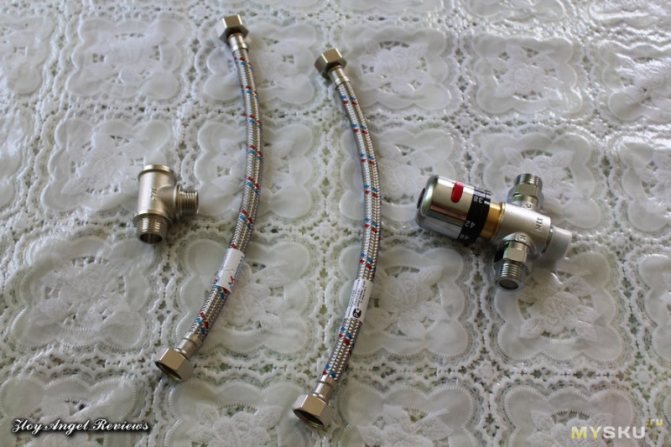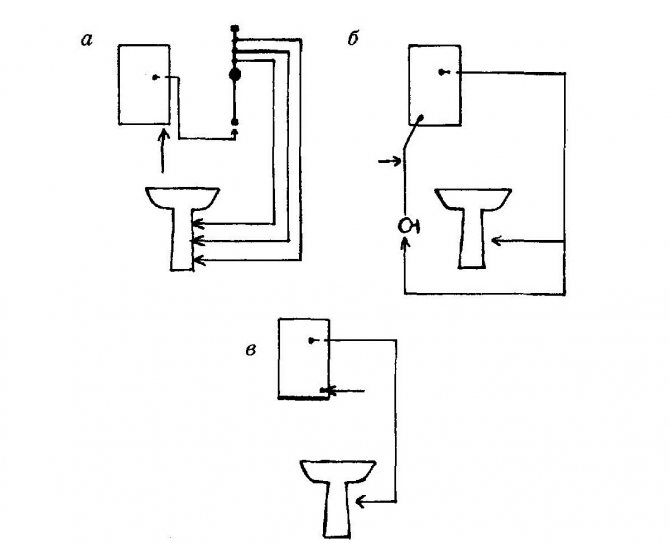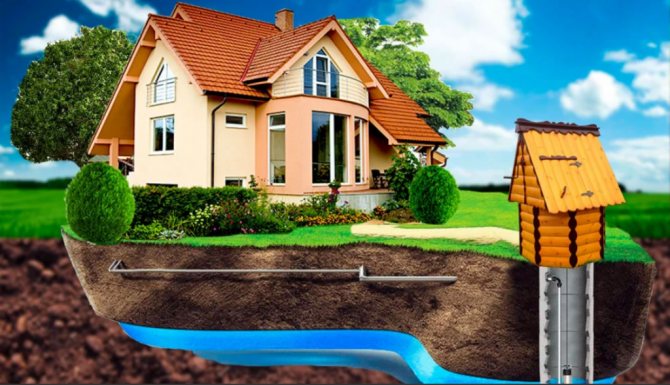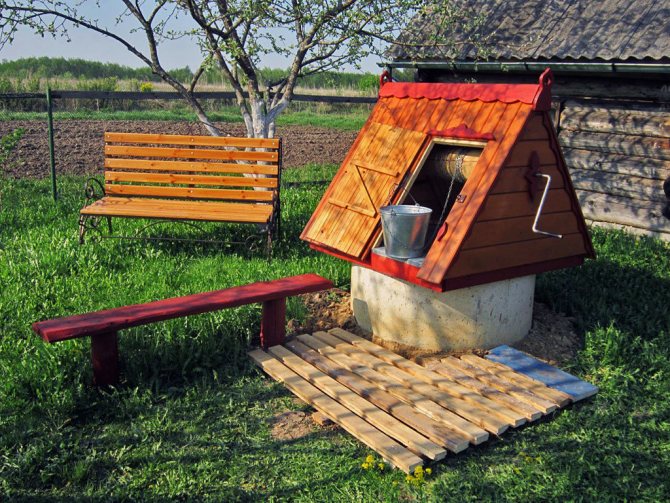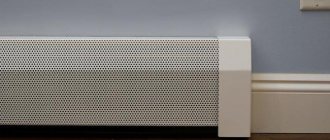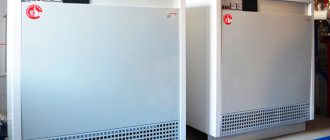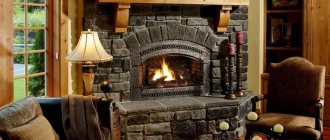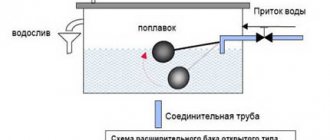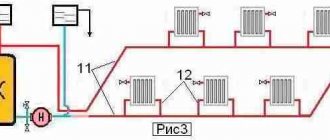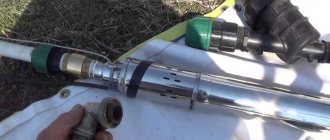Home / DHW
Back to
Published: 07.12.2019
Reading time: 3 minutes
0
1668
With a large distance from the boiler to the water intake point, DHW recirculation may be required. It is necessary for the constant movement of liquid in the hot water circuit.
- 1 What is recirculation for?
- 2 Recirculation diagram
- 3 Installation rules
- 4 System shutdown
Instantaneous heater system
Immediately after opening the tap, hot water is started in a private house: the circuit works on the basis of one of the following components:
- gas water heater;
- instantaneous water heater powered by electricity;
- heating circuit of a two-level heating boiler;
- plate heat exchanger combined with a heating circuit.
The energy that is used to heat the water is activated instantly as soon as the water begins to move through the heater. In order for the system to heat up the water, the speed of its flow from the tap is limited. These indicators (the temperature of hot water in a private house and the intensity of the jet) are closely related.
The following indicators will demonstrate the required level of water heater power for different purposes:
| goal | Required power |
| Take a shower in warm water | 10 kW |
| Fill the bathtub with water at a comfortable temperature | 18 kWt |
| Fill the bathtub and use hot water in the kitchen at the same time | 28 kWt |
Recommended manufacturers of home heating equipment
Most developers prefer to equip the house in such a way as to immediately, in one fell swoop, install heating and meet the needs of residents for hot water. This is the correct approach. The main thing is to decide on the desires and possibilities. Of course, we are talking about the main element of the heating and hot water supply system of a private house - a boiler.
We offer you to familiarize yourself with the washing machine ardo
The most optimal way looks like a heating scheme for a house with a double-circuit boiler, assembled by hand, both in terms of equipment costs and fuel costs.

Today the market offers more than a dozen models that run on coal, wood or fuel briquettes.
The main costs incurred by the owner are the cost of the energy source: gas, electricity, solid fuel or liquid (diesel). The most economical are solid fuel boilers, which, unfortunately, have a significant drawback: a restart is required every 8–10 hours. They are not provided for stand-alone operation. There are options with partial automation (fuel supply, traction control), but this does not fundamentally solve the problem.
Electric units are considered the most expensive from the user's point of view, but in the process of operation they are just a fairy tale. When choosing an electric boiler, you should make sure that when it is turned on, there will be no overload in the power grid, or take into account its power when designing the power supply in the house.
Several decades ago, when equipping the heating of a country house, stoves were actively replaced with water heating, often installing boilers on diesel fuel. It was cheaper, more convenient and cleaner than coal. Now diesel fuel and some types of solid fuel are comparable in price, but they are significantly inferior to gas. Most developers prefer gas heating at home.
When the house is located in a gasified settlement or it is possible to stretch the gas pipe to the courtyard, the best choice is to install a double-circuit gas boiler. The degree of automation of modern gas boilers ensures reliable operation with minimal human control.
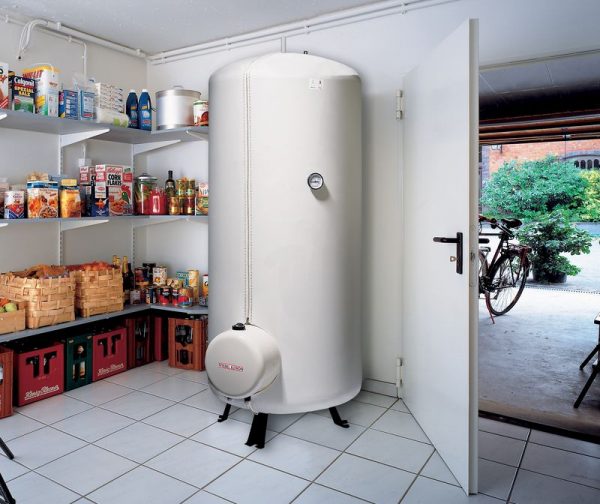

The electric boiler is easy to operate, has a relatively low cost
The most common option to provide hot water supply to a private house with your own hands is to install an electric boiler of the selected capacity. That is, heating - separately, hot water - separately.
When there is natural gas, a gas column is installed, preferably the most modern model, so that the igniter turns on itself. Running hot water from the column comes out cheaper than heated in a storage boiler.
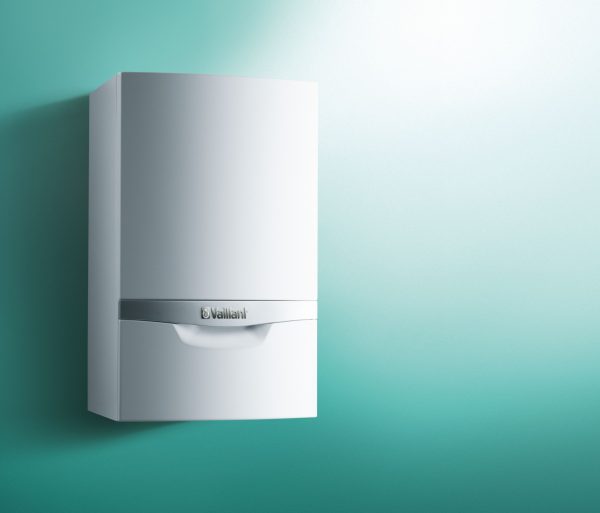

Vaillant is a German manufacturer of heating equipment, whose history dates back to 1974
The choice of equipment begins with determining the available fuel for the boiler: gas, electricity, solid or liquid. Then the proposed models are studied based on the power, reliability of the equipment and its cost.
The list of manufacturers of heating equipment and water heaters is almost limitless, about 500 brands from different countries. In Russia alone, there are more than 150 companies whose models have been serving in private homes for many years. Almost every region has its own manufacturer or its representative.
It is impossible to choose the best manufacturer (the undisputed leader). But you can consider the products of such world famous companies (if the financial side of the issue is not of interest) such as Vaillant, Viessmann, Buderus, Bosch, Ferroli, Ferroli, Ariston. When time is running out, you can spend several months monitoring offers and purchase a boiler or water heater from one of the well-known manufacturers with a good discount.
Among Russian manufacturers, Zhukovsky Machine-Building Plant, Konord Plant, Signal-Teplotekhnika LLC and some others are well-known. In terms of reliability and durability, this equipment is not inferior to foreign counterparts, but it costs much less. In addition, maintenance is easier due to the extensive network of service centers.
The laying of pipes for water supply, sewerage and heating of the house is carried out on the basis of the developed project. They draw up a scheme for installing a boiler in a private house, they calculate whether it is possible to arrange a system with natural circulation of the coolant or if you have to install pumps for circulation. This depends on several factors, including the height of the water column between the boiler and the high point, the total length of the system (pipe).


Its length cannot exceed 30 m.However, if the required slopes are not observed when installing the system, the length will not matter, you will have to cut in the circulation pump or alter the system completely.


When laying heating pipes, it is important to take into account the following: the farther from the boiler the battery, the lower the water temperature in it
It does not provide for adjusting the heating of a single battery or disconnecting one, for example, in the event of a leak and repair.


An alternative can be the so-called "Leningradka", in which a bypass and a regulating valve are installed on each battery.
Two-pipe system
It is more convenient to operate, but more expensive to install: each battery is connected to both a straight and a return pipe (the total length of the pipes doubles). But each radiator can be set to a personal mode.
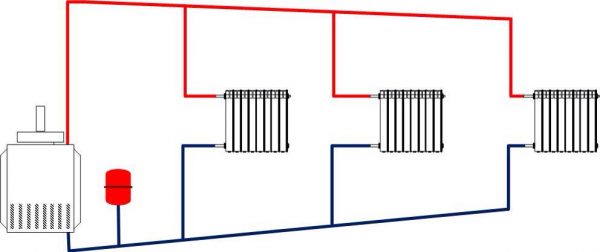

Since the two-pipe heating system of an individual house is not arranged for two or three small rooms, but in order to warm up an impressive structure, it will not be possible to achieve its normal heat transfer without forced circulation
Where a warm smart home is being created, an indirect heating boiler is often installed using hot water passing through it. It integrates into the overall system.
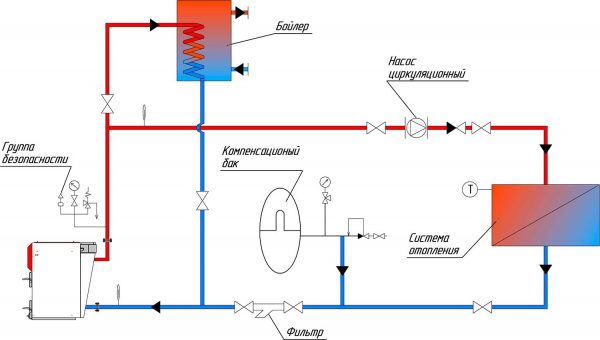

The device of the indirect heating boiler is similar to the device of the direct type water heater
System with storage water heater
The center of the system is a boiler, a volumetric heat-insulated tank made of metal. The following elements are built into its lower part:
- tubular heat exchanger, which is directly connected to the heating boiler;
- electric heating element.
The tank contains water, which is almost constantly heated by the boiler. The electric heater only occasionally participates in this process when the boiler is stopped for short periods of time. Therefore, the storage tank is called an indirect heating boiler.
Hot water that enters the kitchen or bathroom is consumed from the tank, namely from the top of it. At the same moment, cold water flows into the lower part of the boiler from the water supply system. It heats up and rises to the top to then go to the mixers.
What elements does the water supply scheme for an apartment building include?
The water meter unit, which organizes the supply of water to the house, is responsible for the operation of several functions:
- It takes into account the consumption of cold water supply, that is, it performs the function of a water meter;
- It can shut off the cold water supply to the house in case of emergency or if it is necessary to repair units and parts, as well as to eliminate leaks;
- Serves as a coarse water filter: a similar mud filter should contain any hot water supply scheme for an apartment building.
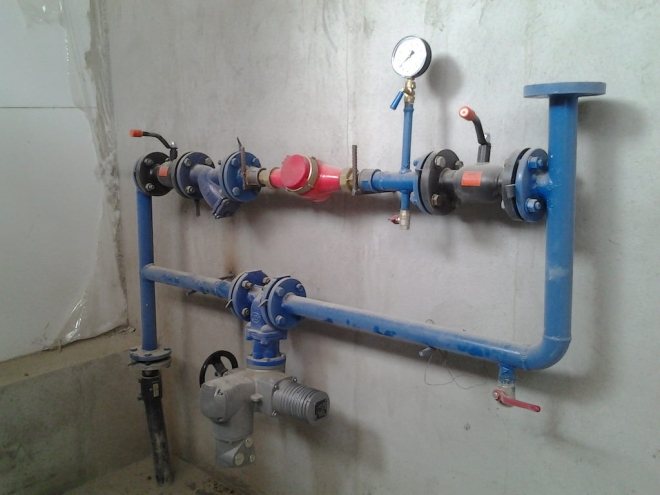

The device itself consists of the following components:
- A set of shut-off valves (taps, gate valves and valves) at the inlet and outlet of the device. As a standard, these are gate valves, ball valves, valves;
- Mechanical water meter, which is installed on one of the risers;
- Dirt filter (filter for coarse water purification from large solid particles). This can be a metal mesh in the case, or a container in which solid debris settles to the bottom;
- Pressure gauge or adapter for inserting the pressure gauge into the water supply circuit;
- Bypass (bypass from a pipe segment), which serves to turn off the water meter during repairs or data verification. The bypass is supplied with shut-off valves in the form of a ball valve or a valve.
Heat point
It is also an elevator unit that performs the following functions:
- Provides full and continuous operation of the heating system in an apartment building, and also regulates its parameters;
- Delivers hot water to the house, that is, provides hot water supply (hot water supply operation). The coolant itself in the heating system enters the hot water supply system of an apartment building directly from the centralized heating main;
- The substation can switch the hot water supply between return and supply. This is sometimes necessary in severe frosts, since at this time the temperature of the coolant on the supply pipe can rise to 130-1500C, and this despite the fact that the standard indicator of the supply temperature should not exceed 750C.


The main element of the substation is a water-jet elevator, where hot water from the working fluid supply pipeline in the house is mixed in a mixing chamber with a return coolant by injection through a special nozzle. Thus, the elevator allows a larger volume of coolant with a low temperature to pass through the heating circuit, and, since the injection is carried out through the nozzle, the supply volume is small.
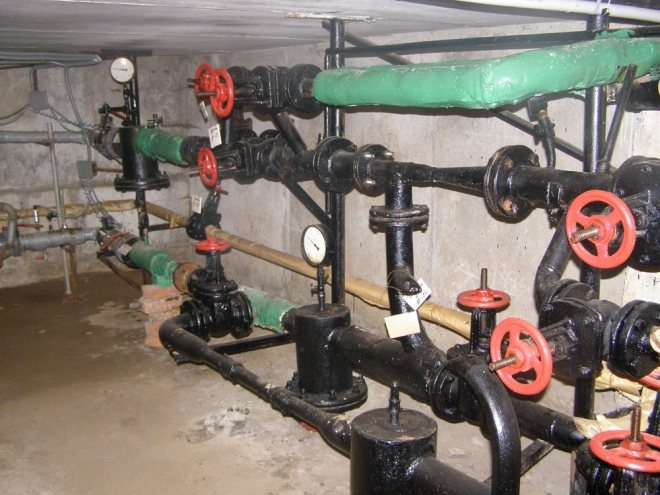

It is possible to embed adapters for connecting hot water supply between the valves at the inlet of the route and the heating point - this is the most common connection scheme. The number of inserts is two or four (one or two at the supply and return). Two inserts are typical for old houses; in new buildings, four adapters are used.
On the cold-water supply route, a dead-end tie-in scheme with two connections is usually used: the water meter unit is connected to the filling, and the filling itself is connected to the risers through which the pipes are routed to the apartments. Water will move in such a cold water circuit only when parsing, that is, when opening any mixers, taps, valves or gates.
Disadvantages of this connection:
- With a prolonged absence of water intake for a specific riser, the water will be cold for a long time when draining;
- Heated towel rails embedded in hot water supplies from boilers, which simultaneously heat a bathroom or a toilet, will be hot only when hot water is drawn from a particular riser of the apartment. That is, they will almost always be cold, which will cause moisture on the walls, mold or fungal diseases of the building materials of the room.
The heating station with four hot water connections in the house makes the hot water circulation continuous, and this happens through two filling and risers connected to each other by jumpers.
Important: if mechanical water meters are installed on the hot water inlays, then the water supply consumption will be taken into account without taking into account the water temperature, which is wrong, since you will have to overpay for hot water that was not in use.
Hot water supply can function in three ways:
- From the supply pipe to the return pipe to the boiler room. Such a DHW system is effective only in the warm season with the heating system turned off;
- From the supply pipe to the supply pipe. Such a connection will bring maximum returns in the demi-season - in autumn and spring, when the coolant temperature is low and far from maximum;
- From the return pipe to the return pipe. This DHW scheme is most efficient in large cold weather, when the temperature on the supply pipe is ≥ 750C.
For the continuous movement of water, a pressure difference is required between the start and end points of the injection into one circuit, and this difference is provided by the flow restriction. Such a limiter is a special retaining washer - a steel pancake with a hole in the middle. Thus, the water that is transported from the inlet to the elevator encounters an obstacle in the form of a washer body, and this obstacle is regulated by a rotation that opens or closes the retaining hole.
But too much restriction of the movement of water in the pipeline route will disrupt the operation of the heating point, therefore, the retaining washer must have a diameter 1 mm larger than the diameter of the heating point nozzle. This size is calculated by the representatives of the heat supplier so that the temperature on the heating return pipe of the elevator unit lies within the standard limits of the temperature schedule.
Equipment selection rules
When choosing the option of how to make hot water in a private house, you need to consider the following factors:
- Dimensions. In a small private house, a large storage tank does not fit, therefore, preference is given to a compact flow-through model.
- Number of residents. The more a person lives under one roof, the higher the likelihood that water will flow out simultaneously from several points: in the bathroom, in the kitchen. If the house has two floors, and each of them has a bathroom, then the water consumption increases. Here, a storage option is preferable, which can provide several points with hot water at once. In this case, the intensity of the jet does not decrease and when the additional point is turned on, the water temperature does not change.
- Aggression. If a storage tank is used, the water becomes hot even with a low head. The same cannot be said about the flow model, which does not react to a small jet and does not heat it up.
- Cost. An important parameter that is considered when choosing. The cheapest electric flow heater costs from 4 thousand rubles, and a storage heater costs from 7 thousand rubles.
Do-it-yourself installation and installation of DHW in a private house - is it worth it?


If the owner of the house is not a professional in installing heating equipment, then he will need about 3 months for installation
Anyone who has basic knowledge and skills in working with metal and electricity can independently install and properly connect the purchased equipment.
The process of installing a reliable Good Wood heating and hot water system takes a lot of time to:
- Prepare a place for the boiler.
- Dissolve pipes throughout the house, not forgetting about radiators.
- Choose and buy the boiler itself.
- Understand the wiring diagrams of a double-circuit boiler, including automation.
- Solve the issue of the need for forced circulation.
- Purchase or make an indirect heating boiler.
- Connect to water and electricity.
The work of specialists, from marking the heating system throughout the country house to the complete commissioning of the heating system, takes up to two weeks.
Before buying the selected boiler or boiler model, you should ask the seller what the installation will cost. Many companies include the cost of installation in the price. If the installation is done independently, connecting to water and electricity, for example, an electric boiler alone by a third-party specialist will cost about 10 thousand rubles (in the regions, plus or minus a couple of thousand). The same service from the supplier will cost about half the price.
Modern boilers are constantly being refined in order to free a person as much as possible from the duties of a stoker; they are equipped with more and more sophisticated automation that can cope with any problems on their own. That is why a competent approach to the installation and first launch of such equipment is important.
Thus, the bulk of the installation work can be done by hand, and before connecting, invite a specialist.
Now one of the most popular and effective methods that will satisfy the general household needs of hot water supply is the use of flow (storage) water heaters.
Heating a residential country house with the help of such devices is possible when a large storage tank is available.
Indirect boiler, electric, 40 l
Such systems are equipped with a special heating element for heating, and are designed to maintain a constant hot water supply for a private residential country house.
Due to the presence of such a storage-type water heater, the common house needs of residents of a private house will be constantly satisfied.
This is due to the fact that the boiler works continuously, and the storage heater ensures that a constant water temperature is maintained at a given level.
In this case, hot water can be obtained immediately. This is due to the regular (every 2-3 hours) overheating of cold water in the tank.
The general house needs of the inhabitants of a residential country house, thanks to the boiler, can be satisfied at any time. The storage heater has several advantages. It:
- Continuous provision of hot water to the water supply system;
- The ability to adjust the outlet water temperature;
- Low electrical power of the system.
So that hot water flows out of the tap almost immediately. you could always take a shower and a bath, you should understand which heating method would be preferable:
- Instantaneous heaters will be able to supply hot water almost immediately. Compact weight and small dimensions make it easy to transport and install. The system can work automatically and at several points at once. The disadvantages include the fact that you have to make the correct settings in order to adjust the flow rate and not reduce the outlet water temperature.
- Storage water heaters are a powerful tank or boiler, into which both a tubular heat exchanger and a heating element are built. A large volume, where water circulation takes place, will make it possible to use hot water for several hours. Heating takes place more slowly while thermal energy is accumulating, and intermittent shutdown is not always convenient.
Nevertheless, each water supply scheme has its own pros and cons, but here it is important to deal with the heat carriers that will be needed for the selected water heater.
After all, it is most expedient to solve two problems at once - hot water supply for a private house and heating. Moreover, modern devices will allow you to do this without any problems.
Hot water temperature in the tap according to the standard
It is possible to reduce the payment for hot and cold water even if the tenant has been absent for more than five days. However, this is possible if the payment is calculated according to the standards, without counters, and requires documentary confirmation (transport tickets, a certificate from the hospital, etc.). Recalculation is made within five working days, and if the Management Company does not agree with the claim, then the tenant must receive a written reasoned refusal not less than one month after the application.
Hot water supply of a private country house
Be prepared for the chief engineer to show his knowledge and in response to you, "poke under your nose" the text "... Before taking samples of hot water, drain the water until a constant temperature is established. The time for draining water can be up to 10 minutes ... ", set out in the same paragraph 7.5 of the Methodological Guidelines MUK 4.3.2900-11. Inform him in response that the Government Decree has greater legal force than the MUK Rospotrebnadzor, especially since the Government Decree came into effect later by virtue of." Another "crown number-focus", which is often performed by the heat supply organization (TSO) before measuring the temperature of hot water (Tgv) - on the eve or at night of the planned measurement day, raises Tgw to the required 60 - 65 degrees C, or even up to 70 degrees. FROM.
The temperature of hot water in the tap in the apartment, sanpin
In short - mostly 60 - 75 degrees Celsius before September 1, 2012, and in all cases, without exception, 60 - 75 degrees Celsius after September 1, 2012. With the installation of water meters, this issue becomes almost of paramount importance, since by reducing the temperature of the hot water supplied to the apartments, the contractor not only saves on heating, but also increases the consumption of consumers in the tap of hot water, the tariff of which is higher compared to cold water. Sometimes you can find the answer option: "at least 50 degrees Celsius", with reference to paragraph 5, section II, Appendix No. 1 to the Rules for the provision of public utilities to citizens, approved by the Decree of the Government of the Russian Federation No. 307 of May 23, 2006. This is an incorrect answer. for the vast majority of cases.
Using a double-circuit gas boiler
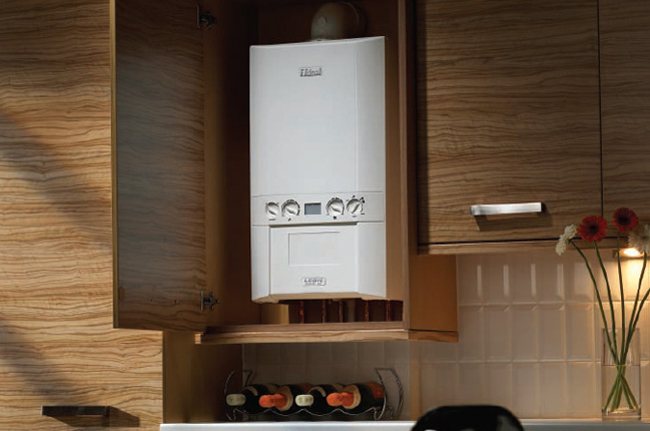

When the number of water points of a private house is small and the simultaneous use of only washbasins is assumed, then it is best to choose a double-circuit boiler with instantaneous heating of water. Such boilers are capable of producing hot water up to twenty liters per minute. It is this option that is the simplest and most economical.
In order to mount this hot water supply system, you need to make a supply of pipes with cold water and at the exit from the boiler it will already be possible to receive hot water. It is necessary to take into account the fact that for a certain time hot water will cool down in the pipeline and therefore, in order for hot water to pour from the tap, it will be necessary to wait for some time.
What is the standard for the temperature of hot water in the apartment?
The owners of the highway are obliged to solve these problems.The only thing that a tenant should know is how to properly draw up a complaint, on the basis of which the representatives of the housing office will recalculate for the services provided. What to do when deviations are detected Water does not meet the requirements of SanPiN? In order for you to revise your bills for hot water, you need to coordinate your actions, in accordance with the provisions spelled out in Decree No. 354 of the Government of the Russian Federation. Claims qualifying the sequence of the consumer's actions:
- If you managed to find and fix a violation, it is worth informing an employee of the dispatch service about it orally or in writing. The employee of the service organization must register the fact of the user's request.
What should be the temperature of hot water in the tap according to existing standards?
- 1 Norm of temperature of hot water in the apartment
- 2 What are the temperature standards for hot water established by SanPin
- 3 If the norms do not correspond, which coefficient for calculating hot water is valid
- 4 Hot water is inappropriate where to complain
- 5 How to make a complaint
- 6 How to request recalculation
The situation when hot water in the tap cannot reach the proper temperature level in any way is not so uncommon. And in order to understand that the problem exists, it is not at all necessary to measure the degree of water, it is enough to try to take a bath. Such an event will be more like hardening than a hygienic procedure. What should be done if the hot water temperature is clearly far from the norm, and where in this situation should a complaint be made.
What should be the maximum temperature of hot water in the tap according to the standards
Home / Water supply / Centralized / What should be the maximum temperature of hot water in the tap according to standards Regardless of the season, we need warm water. It doesn't matter where a person lives, in Moscow or in a village remote from the central regions, he wants to enjoy comfortable conditions. You will say that it is enough that there is light, gas and cold water. But many, most likely, will want to argue with such a statement. The content of the article:
- Normative acts
- Maximum and minimum indicators
- How to correctly measure the temperature of the liquid at the point of intake
- What to do when deviations are found
- What to do after you receive the document in your hands
Regulations It is difficult to imagine a modern home without hot water.
- When it comes to night time (from "zero" hours to five in the morning) - the tolerance can be within five degrees.
- In the afternoon (from five in the morning to twelve in the morning) - the discrepancy should not be more than three degrees.
Is it really so important to have hot water in the taps? This question is of fundamental importance (how to make heating wiring in a private house is written here).
How the temperature range is set
About what temperature the hot water should be in the water supply system and central heating, the information is set out in SanPiN 2.1.4.2496-09 (sanitary rules and norms that determine the temperature of hot water supply and heating) and GOST R 51617-2000 (air temperature in the room when using heating and DHW). The parameters do not change for a long time, since they are determined by the appropriateness of these values - a person should feel comfortable and not experience any inconvenience when using hot water in one form or another.
Since the temperature of the water in the hot water supply depends on the technical solution for the water supply of the house or apartment, the temperature for the cold water supply and hot water supply will always be different. The temperature in the DHW system should not go beyond 600C-750C for all points of water intake. If the DHW circuit is of a closed type, then the minimum permissible water temperature should be 500C, for an open DHW it is 600C.
Housing and communal services standards contain the following permissible deviations: a decrease in temperature by 50C at night (from 0.00 to 5.00) and a decrease in temperature in the daytime by 30C (from 5.00 to 0.00). These rules are based not only on the comfort of using hot water supply, but also on the safety of residents. In case of deviation from the regulations by more than the specified limits for every 30C, residents have the right to demand a decrease in the payment for hot water supply by 0.1% for every 60 minutes of violation. If, during control measurements of the temperature, the thermometer showed a temperature of ≤ 40 ° C, then the payment of utilities is carried out at the rates of payment for cold water supply. To confirm the data, it is necessary to conduct an official measurement and draw up an act certifying the deviation from the SanPiN regulations.
Hot water in the pipes can cause burns, especially for children. In addition, modern pipelines are plastic or metal-plastic, and high water temperatures have a destructive effect on them. When the temperature in the pipes exceeds 760C, the regulation is violated, as well as when the temperature drops to 560C, and residents have the right to write an individual or collective complaint against the utility company.


Normal temperature range
There is also one more rule that forces you to regulate the hot water supply in the apartment within the range of 60-750C. In warm water, microorganisms and pathogenic bacteria begin to multiply quickly and actively. Thus, the limiting temperature range must cover the values. In which a person will not receive burns, but microorganisms will die without causing harm to consumers. This rule is especially relevant for children's and medical institutions.
Legionella, a bacterium that causes pneumonia of unknown etiology, multiplies well in warm fresh water. This means that in most cases the disease is not detected or is defined incorrectly, which leads to incorrect treatment with appropriate results, up to and including death. But in hot water, Legionella dies depending on the temperature:
- At 70-800C, the water is completely disinfected - all bacteria die instantly;
- At 660C, Legionella dies in 120 seconds;
- At a temperature of 60C, microorganisms die in 22 minutes;
- At 550C, bacteria die in 6-7 hours;
- At a temperature of 20−45 ° C, the active phase of the reproduction of Legionella begins;
- At temperatures ≤ 20 ° C, legionella cannot reproduce due to the cold.


Legionella breeding temperature graph
Based on the foregoing, it becomes clear that at high temperatures, safe use of hot water supply occurs in terms of morbidity, but unsafe in terms of possible burns:
- At a temperature of water in the DHW ≤ 500C, there is a sufficient degree of probability of getting a burn;
- At temperatures ≥ 650C, skin burns occur in 2-5 seconds;
- At a water temperature of 55 ° C, a burn can be obtained in one and a half minutes.
The problem is solved as follows: when centralized distribution to residential buildings, hot water is first stored in tanks, where the temperature is maintained sufficient for the death of bacteria. As DHW is supplied to the house, its temperature drops to a regulated level, and the use of DHW should be carried out only with the simultaneous connection of cold water supply to the house.
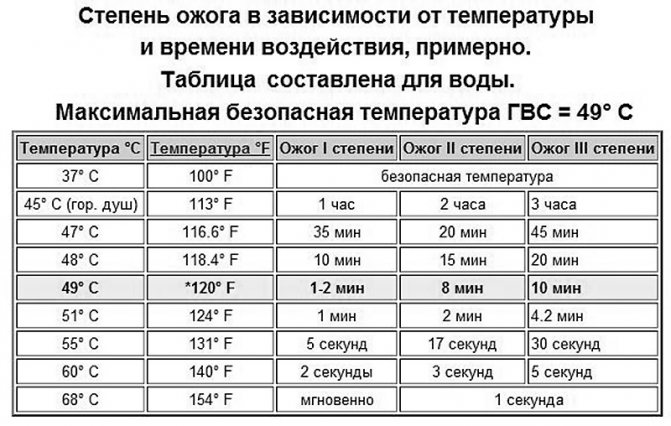

Burns depending on the temperature of the water in the DHW system
Optimum temperature of hot water in the tap of a private house
With a closed system, such a technological break is not needed, since accelerated depreciation of hot water pipes occurs only in the area from the boiler to the apartments, that is, practically only inside the house, replacing a fragment of such a small area is a matter of a maximum of two days, but the heat supply itself, that is, not drinking , and the technical hot water supplied to the heating system already has a sufficient amount of anti-corrosion additives, the pipes wear out slowly, and their replacement in the summer is invisible to any of the residents. The paucity of closed centralized heating systems, among other things, is due to the fact that a residential building with a boiler room leads to an increase in the cost of housing construction, which builders have always tried to avoid.Thus, the answer option "at least 50 degrees Celsius" is valid only in such extremely few situations where there is this very boiler room.
Preparation for the arrangement of hot water supply
It is best to create a design project for the water supply of a house at the stage of construction work, so that it is possible to arrange communications in an appropriate way. Next you will need:
- Decide on a water source for heating: it can be a well or a well, in some cases - a central system.
- Designate the location of the boiler for heating, storage, hoses. For this purpose, a technical room is specially allocated.
- Decide on the material of pipes for heating.
- Carry out the installation of a private house system.
If a residential building has a small area and one floor, the heating scheme may contain a single-type simple project that combines heating with heated water. In this case, a single instantaneous water heater is installed for the water supply, which distributes hot water to all taps located inside the house.
For a two-storey building with several bathrooms, showers, you should choose a different hot water supply system. In this case, it is necessary to install powerful equipment, for which a special room should be allocated or a boiler box should be erected underground.
